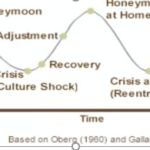Annotated Bibliography Legalization of Marijuana
Annotated Bibliography Legalization of Marijuana
Ammerman, S., Ryan, S., Adelman, W. & The Committee on Substance Abuse, Committee on Adolescence, & Committee on Substance Abuse Committee on Adolescence. (2015).The impact of marijuana policies on youth: clinical, research, and legal update. Pediatrics, 135(3), 584-7.
This study was a combined one between a number of physicians and a committee on abuse and a committee on adolescents. The research was published in a peer-reviewed journal this year and is therefore up to date and relevant to this study I am going to be conducting. The reason for the importance of this work is that it gives a plethora of useful data on the impact that actual recent marijuana policies are having on young people. Since this study will be looking at college aged students and their views and perceptions of marijuana, it only makes sense to utilize some recent research on this issue. The existing research will help in a few manners. Firstly it will allow research questions and parameters to be clear and it will secondly allow results to be placed side by side with the information found in the existing study.
Doctor, R. M., & Sklov, M. (1973). A Cross-cultural Study of Attitudes about Marijuana Smokers. British Journal of Addiction to Alcohol & Other Drugs, 68(2), 111-115.
This is a peer-reviewed study from the 1970s. While it may be old it gives a large amount of information regarding marijuana use across cultures from a period long past. This can allow for the data from now to be assessed based on more than just modern figures and numbers, but older ones as well. It will be interesting to see how much, if at all, perceptions have changed regarding marijuana use. This study was a cross cultural one, and while my study is focused not on cultural issues but rather youth perception of marijuana use the previous data can act as a general measure for the current data that I am going to be putting together and looking at. Additionally, the survey used for this study was also given to students so the student opinion from then can also be relevant in understanding results now.
Palamar, J. J., Fenstermaker, M., Kamboukos, D., Ompad, D. C., Cleland, C. M., & Weitzman, M. (2014). Adverse psychosocial outcomes associated with drug use among US high school seniors: a comparison of alcohol and marijuana. The American Journal of Drug and Alcohol Abuse, 40(6), 438-446.
This is also a peer-reviewed study that utilizes authors who have a great deal of information and experience with the field of drug abuse and adolescents. Each other has previously published data and research on this issue. The research was published in a well-respected peer-reviewed journal of merit only last year making it very recent and up to date. This study also looks at students and young people and assesses both attitudes and realities about the use of marijuana and alcohol amongst this group. This study, like the first one, can inform the questions that will be crafted for this research assignments questionnaire. It can also help us to better understand the results that we receive in the end.
Reyna, V. F., & Farley, F. (2006). Risk and Rationality in Adolescent Decision Making: Implications for Theory, Practice, and Public Policy. Psychological Science in the Public Interest, 7(1), 1-44.
Younger people are slated as not having the ability to make rationale choices in the same manner as those who are over 25. This has been shown to be related to the brain becoming fully developed at that marker. This peer-reviewed publication addresses the very issue of decision making amongst younger people as well as the risks that they are up against. This information can help to both craft the study, the questions as well as to understand the implications of some of the results. This is because ultimately the information held in this study addressed the issue of how there are implications for public policy when it comes to the adolescent decision maker. This is very fascinating because much of the other research also looks at how young people and their attitudes and perceptions can be a catalyst or inhibitor for public policy. For my study this is also important since I assert that young people will support marijuana use and legalization and also that they have been a very strong grassroots movement in the legalization movement these last few years.
Trevino, R. A., & Richard, A. J. (2002). Attitudes towards drug legalization among drug users. The American Journal of Drug and Alcohol Abuse, 28(1), 91-108.
This study looks more at the attitudes of the actual drug users on legalization of marijuana. I would like to perhaps incorporate a question into the study about those who are users as opposed to not users. It will be interesting to see if the support given for legalization is higher in a significant manner amongst those who are users or only those who are not users or vice versa. This study and its responses can help both lead me to finding the best way to formulate the question and also give insight onto the results used there so that perhaps it will not be necessary to actually use the question on my own at all since much can be inferred from the responses and results from this individuals’ study.





